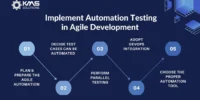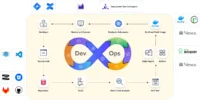Automation has become the alchemist’s stone of the IT world, turning routine tasks into gold and unlocking new levels of efficiency. For IT professionals seeking to streamline their workflows and embrace the magic of automation, here are quick tips to bring about a transformation in your daily operations.
1. Identify Repetitive Tasks for Automation
Start your automation journey by identifying repetitive and time-consuming tasks in your workflow. These are prime candidates for automation. Whether it’s software deployment, data backups, or system monitoring, pinpoint tasks that can be optimized through automation to free up your time for more strategic activities.
2. Leverage Configuration Management Tools
Configuration management tools like Ansible, Puppet, or Chef can work wonders in automating the setup and maintenance of your IT infrastructure. Create scripts and playbooks to define the desired state of your systems, ensuring consistency and reducing the likelihood of configuration drift.
3. Explore Scripting Languages
Scripting languages such as Python, PowerShell, or Bash are powerful allies in the realm of automation. Invest time in learning and mastering these languages to create custom scripts that automate specific tasks. Scripting provides flexibility and allows you to tailor automation to your unique requirements.
4. Implement Continuous Integration/Continuous Deployment (CI/CD)
For software development and deployment, embrace CI/CD pipelines. Tools like Jenkins, GitLab CI, or GitHub Actions automate the building, testing, and deployment of your applications. CI/CD pipelines enhance collaboration, reduce manual errors, and accelerate the release process.
5. Automate Cloud Infrastructure Management
If your IT operations involve cloud services, make use of cloud automation tools. Platforms like AWS CloudFormation, Azure Resource Manager, or Terraform enable you to define and manage cloud infrastructure as code. Automating the provisioning and scaling of resources ensures efficiency and cost-effectiveness.
6. Monitor and Automate Routine Maintenance
Automate routine maintenance tasks by leveraging monitoring tools. Set up alerts for performance thresholds and automate responses to common issues. Automated maintenance can include tasks like log rotation, database optimizations, and system cleanup, ensuring the health of your systems without manual intervention.
7. Utilize Robotic Process Automation (RPA)
For automating repetitive tasks at the user interface level, consider Robotic Process Automation (RPA). RPA tools can mimic human interactions with software applications, automating tasks like data entry, form submissions, or report generation. This is particularly useful for tasks that lack APIs for direct integration.
8. Integrate APIs for Seamless Communication
Facilitate seamless communication between different software systems by integrating Application Programming Interfaces (APIs). Automation becomes more effective when different tools can exchange information effortlessly. Explore and leverage APIs to connect and automate workflows across your IT ecosystem.
9. Document and Version Your Automation
Documentation is the key to maintaining and scaling automation. Clearly document your automation processes, scripts, and configurations. Additionally, version control systems, such as Git, provide a mechanism to track changes and roll back to previous versions if needed, ensuring the stability of your automated workflows.
10. Stay Informed and Evolve
The field of automation is dynamic, with new tools and techniques regularly emerging. Stay informed about the latest developments, attend webinars, and participate in communities to exchange insights with other IT professionals. Continuously evolve your automation strategies to stay at the forefront of efficiency.
Conclusion
Automation alchemy can revolutionize your IT workflow, turning mundane tasks into opportunities for innovation. By identifying repetitive tasks, leveraging configuration management tools, exploring scripting languages, implementing CI/CD, automating cloud infrastructure management, monitoring and automating routine maintenance, utilizing RPA, integrating APIs, documenting and versioning automation, and staying informed, you can perform IT magic and transform your daily operations.








